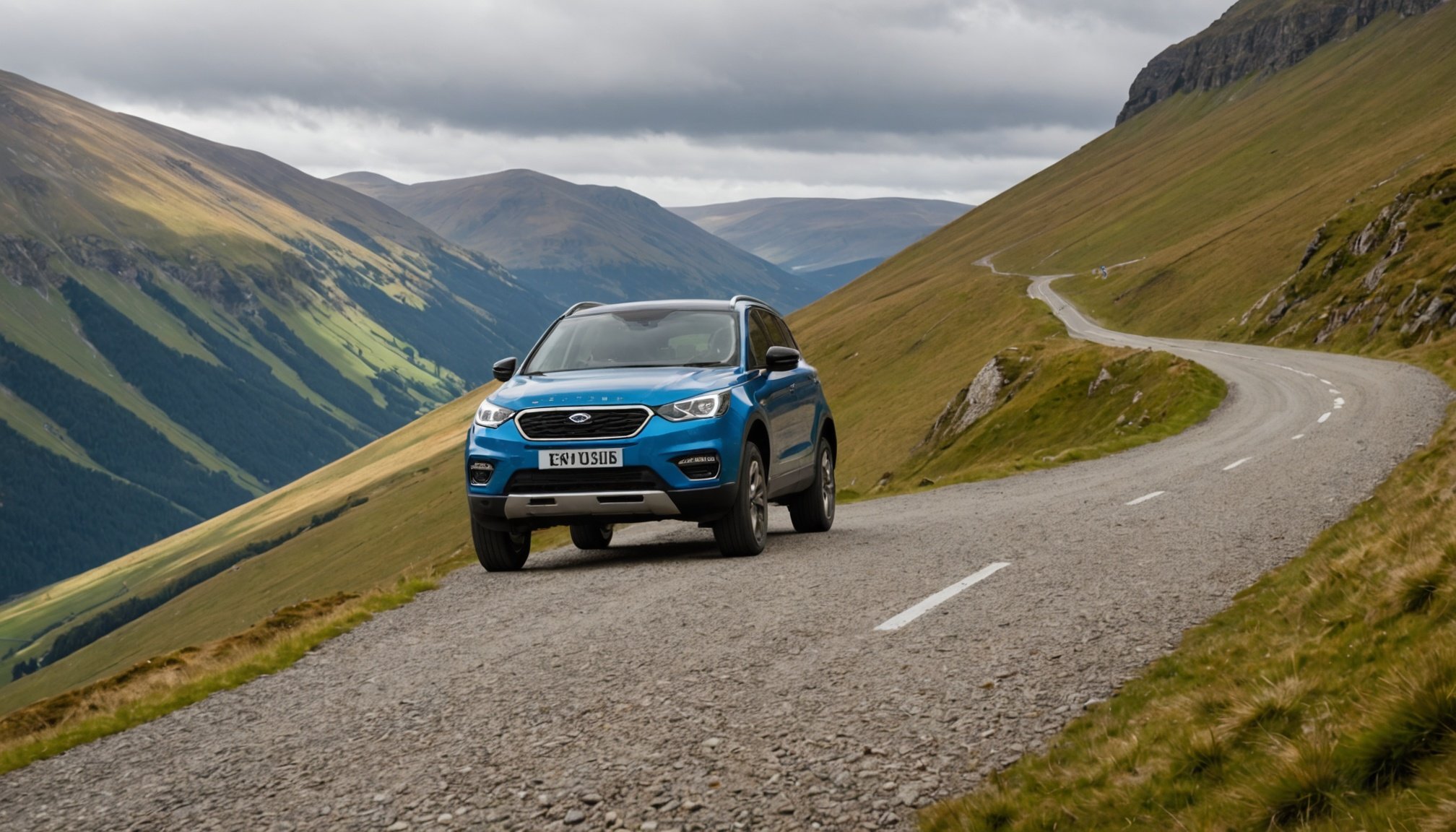Unveiling How Vehicle Weight Affects Braking Efficacy on the UK’s Most Challenging Steep Descents
When driving on the UK’s steep and winding roads, especially those found in the Scottish Highlands or the Welsh mountains, the weight of your vehicle can significantly impact its braking efficacy. This article delves into the intricacies of how vehicle weight influences braking performance, particularly on challenging descents, and provides practical insights and advice for drivers.
Understanding Braking Systems and Vehicle Weight
To grasp how vehicle weight affects braking, it’s essential to understand the basics of braking systems. Most modern vehicles, especially those designed for efficiency and safety, employ a combination of friction braking and, in the case of hybrid and electric vehicles, regenerative braking.
Topic to read : Unraveling how tire compositions influence vehicle performance in diverse uk weather conditions
Friction Braking
Friction braking is the traditional method where kinetic energy is converted into heat through the friction between brake pads and the brake rotors. This method is effective but can be less efficient on steep descents, especially with heavier vehicles, due to the increased load on the brakes[1].
Regenerative Braking
Regenerative braking, on the other hand, captures some of the kinetic energy and converts it back into electrical energy, which is then stored in the vehicle’s battery. While this system is highly efficient in recovering energy, it is not sufficient to bring a vehicle to a complete halt on its own and must be used in conjunction with friction braking. The effectiveness of regenerative braking can also be influenced by the vehicle’s weight, as heavier vehicles may require more energy to slow down[1].
Additional reading : Ultimate guide to differential care: ensure safe off-roading adventures with your vehicle
The Impact of Vehicle Weight on Braking
Vehicle weight is a critical factor in braking performance. Here are some key points to consider:
Increased Braking Distance
Heavier vehicles require longer braking distances due to their greater momentum. On steep descents, this can be particularly hazardous as the vehicle may gain speed more quickly, making it harder to control.
Higher Heat Generation
Braking a heavier vehicle generates more heat, which can lead to brake fade—a condition where the brakes become less effective due to overheating. This is a significant concern on long, steep descents where continuous braking is necessary[1].
Reduced Regenerative Braking Efficiency
In hybrid and electric vehicles, the regenerative braking system may be less efficient in heavier vehicles. This is because the system has to handle more energy, which can reduce its effectiveness and increase the reliance on friction braking.
Driving on Steep Descents: Practical Considerations
When driving on steep descents, several practical considerations can help ensure safe and controlled braking.
Use of Low Gears
For vehicles with manual transmission, using low gears can help control speed without over-relying on the brakes. This method is particularly effective in reducing the load on the braking system and preventing overheating.
Engine Braking
Engine braking, where the engine’s compression is used to slow the vehicle, is another effective technique. This method is especially useful in vehicles with automatic transmission when used in conjunction with the “L” or “2” gear setting.
Proper Maintenance
Ensuring that your vehicle’s braking system is well-maintained is crucial. Regular checks on brake pads, rotors, and brake fluid can prevent unexpected failures and ensure optimal braking performance.
Features and Technologies to Enhance Braking
Several modern vehicle features and technologies can enhance braking efficacy, especially on steep descents.
Hill Descent Control (HDC)
Hill Descent Control (HDC) is a feature found in some off-road and 4×4 vehicles that automatically regulates the vehicle’s speed on steep descents, preventing it from accelerating uncontrollably. This system uses a combination of braking and engine control to maintain a safe speed[4].
Adaptive Cruise Control and Brake Assist
Advanced safety features like adaptive cruise control and brake assist can also play a significant role. These systems can anticipate and respond to braking needs more effectively, especially in vehicles equipped with advanced driver assistance systems (ADAS).
Comparative Analysis: Vehicle Weight and Braking Systems
Here is a comparative analysis of how different vehicle weights and braking systems perform on steep descents:
| Vehicle Type | Weight Range | Braking System | Braking Performance on Steep Descents |
|---|---|---|---|
| Small Hatchback | 1,000 – 1,200 kg | Friction Braking | Good control, moderate heat generation |
| Mid-size Sedan | 1,300 – 1,600 kg | Friction Braking | Fair control, higher heat generation |
| Large SUV | 2,000 – 2,500 kg | Friction & Regenerative Braking | Poor control, high heat generation, reduced regenerative efficiency |
| Electric Vehicle | 1,800 – 2,200 kg | Regenerative & Friction Braking | Good control with regenerative braking, but reduced efficiency with higher weight |
Real-World Examples and Anecdotes
The Mercedes Benz GLE
The Mercedes Benz GLE, a mid-size SUV, is known for its robust braking system. However, its weight, which can range from 1,900 to 2,200 kg depending on the trim, can affect its braking performance on steep descents. Drivers of the GLE often report the need to use a combination of engine braking and careful gear selection to maintain control.
The INEOS Grenadier
The INEOS Grenadier, an off-road focused vehicle, features a sophisticated HDC system. This system has been praised for its ability to control the vehicle’s speed on steep descents, even in challenging off-road conditions. The Grenadier’s weight, around 2,600 kg, is managed effectively by this system, ensuring safe and controlled braking[4].
Tips for Safe Braking on Steep Descents
Here are some practical tips for safe braking on steep descents:
- Use Low Gears: For manual transmission vehicles, use low gears to control speed.
- Engine Braking: Use engine braking to reduce the load on the brakes.
- Proper Maintenance: Ensure regular checks on brake pads, rotors, and brake fluid.
- Hill Descent Control: If available, use HDC to regulate speed automatically.
- Adaptive Cruise Control: Utilize adaptive cruise control and brake assist features.
- Weight Distribution: Be aware of the weight distribution in your vehicle, especially if carrying heavy loads.
- Driver Training: Consider driver training courses that focus on safe driving techniques on steep descents.
The weight of a vehicle plays a critical role in its braking efficacy, especially on the UK’s most challenging steep descents. Understanding the differences between friction and regenerative braking, and how vehicle weight impacts these systems, is essential for safe and controlled driving. By leveraging modern vehicle features, maintaining proper vehicle condition, and adopting practical driving techniques, drivers can significantly enhance their braking performance and ensure a safer driving experience.
As a driver, it’s crucial to be aware of your vehicle’s capabilities and limitations, particularly in challenging driving conditions. Whether you’re driving a small hatchback or a large SUV, knowing how to manage your vehicle’s weight and braking system can make all the difference between a safe journey and a potentially hazardous one. So next time you find yourself navigating those steep and winding roads, remember the importance of vehicle weight and braking efficacy, and drive with the confidence that comes from being well-informed.











